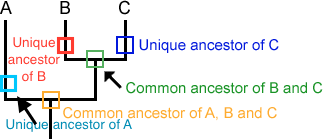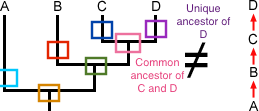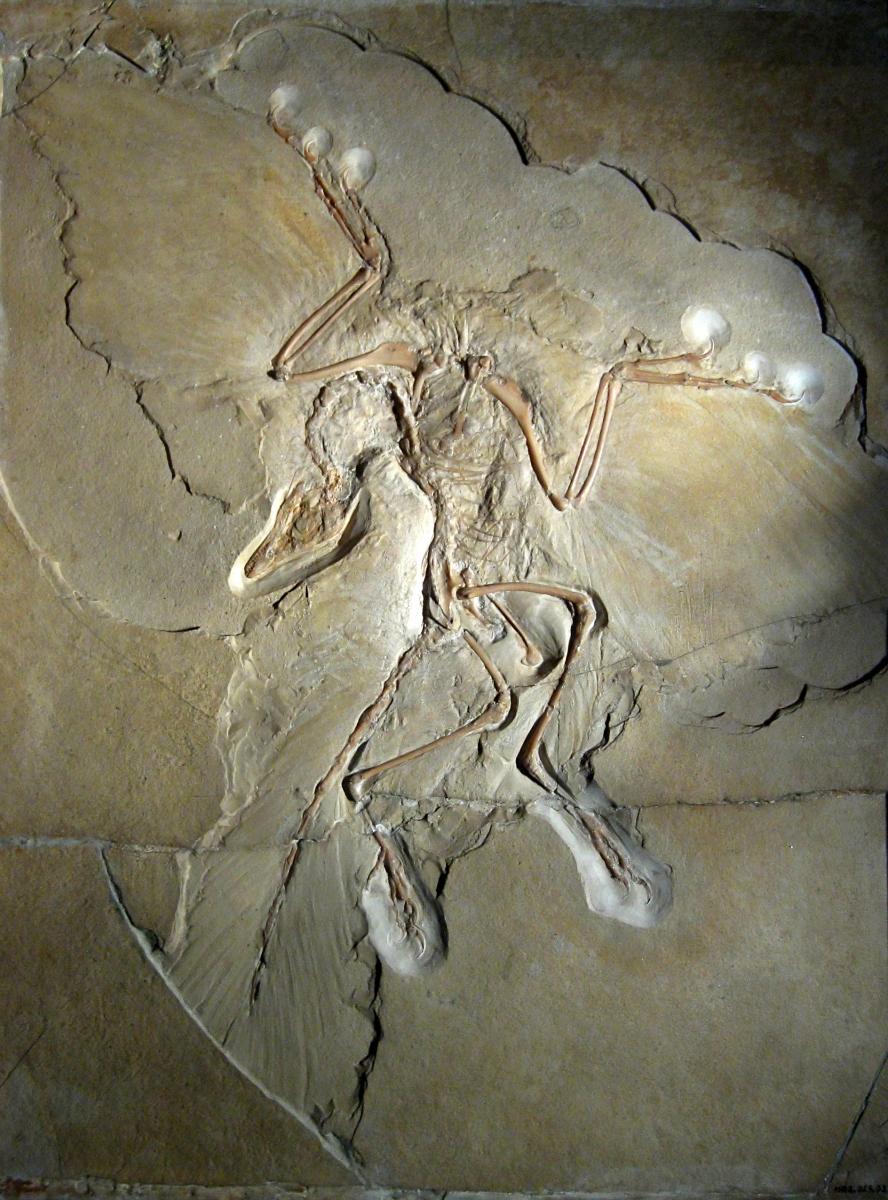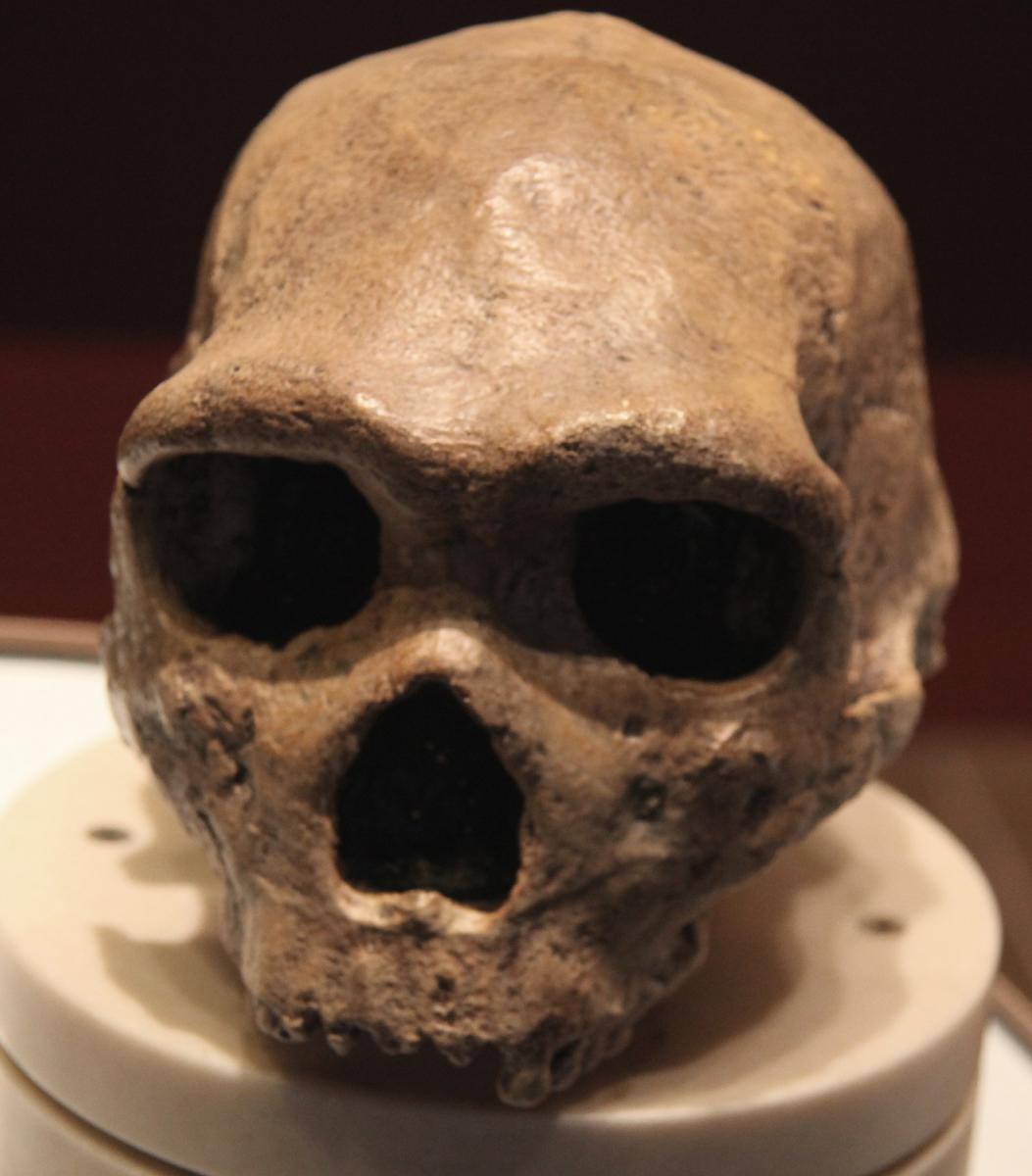After three weeks of slogging through epigenetics, I am feeling almost giddy sitting down to write this post. This week’s topic is a reader request and dovetails with many previous posts. It’s also in the news pretty much every week, so you might say it’s a favorite of journalists—which is a big part of the problem.
Misconception: Scientists frequently find “missing links” of evolution that fill in the gaps between known forms.
Correction: Scientists frequently find new forms that help them to understand the diversity of past life.
How common is the phrase “missing link”? Pretty darn common. Just this week, for example, there were many articles like this one: “‘Missing link’ found for spectacular ancient sea reptiles.” A quick Google Scholar search for “missing link” came up with plenty of results, demonstrating that academics are not immune to using this catchy phrase, either. And it is a catchy phrase, immediately evocative of a big discovery of great importance. The problem is, it just doesn’t make much sense.
First of all, if you find the fossil, it’s no longer missing. I know that is a little persnickety of me, but really, found link would be better, wouldn’t it? The real issue, however, isn’t missing but link. For a fossil form to be a link implies that evolution can be thought of as one long chain of forms—a great chain of being, if you will. And what’s another name for the great chain of being? The scala naturae. Yep, here we are again.
As we have discussed many times in this blog, the history of life cannot be represented by one long, linear chain of forms. Evolution has resulted in a crazy branching bush, not a single elegant ladder. As such, the vast majority of fossils uncovered by paleontologists are evolutionary “dead ends”—twigs on the tree of life—not direct ancestors of modern forms. UCMP’s Anna Thanukos gave me this great analogy: Say your family has lived in the same town for hundreds of years. You go to the town hall and and pick a name at random from the register of births. The odds that you happen to pick one of your direct ancestors is slim, but the chance that you pick someone who is related to you in some way, but not along your direct line (a distant cousin, perhaps) is much higher. It’s the same with the fossil record. It’s important to note, however, that evolutionary “dead ends” are far from useless. Just because your third cousin four times removed isn’t a direct ancestor wouldn’t make his being an famed acrobat or discoverer of some important scientific idea less interesting nor does it mean you haven’t learned anything about your family.
Now that we’ve covered that basic point, let’s move on to how to read the diagrams scientists use to represent the crazy branching bush (called phylogenetic trees, or cladograms). Understanding how to interpret these diagrams will go a long way to understanding the missing link problem, so let’s have a quick tutorial.
Here is a simple phylogenetic tree of three groups, A, B, and C.

Note that the nodes, or branching points, represent divergence events. The squares around the node also represent the most recent common ancestor of the two branching groups, or the unique ancestor of a single group. (And remember! In this context, we are very rately talking an individual ancestor, but rather, groups of ancestral populations.)
So let’s say scientists find a new form, D. Where does it go? To figure that out, scientists analyze its traits. Does it share the most unique characteristics of form A, B, or C? Let’s say that it has the most in common with C. It’s not exactly like C, but it shares a lot of the same characteristics that makes C different from A and B. So D will branch off from C’s lineage, making the tree look like this:

You’ll notice that D did not go on a node or a branch. That’s because A did not morph into B, which morphed into C and D. So D is not a missing link so much as it’s a newly discovered form that helps us to understand the diversity of the group. Also note that after finding D, there are now two new potential areas of discovery—forms with a shared common ancestry of C and D (pink) and forms sharing many of the characteristics of the unique ancestry of D (purple). If you find one “link,” you are automatically “missing” two more!
 So what about the quintessential missing link, Archaeopteryx? It’s part bird! Part dinosaur! It is the missing link between birds and dinosaurs! Right? Wrong. Sorry, but it just doesn’t work that way. Look at this tree and see where Archaeopteryx fits in—it’s not sitting on the node between modern birds and non-avian dinosaurs; it’s perching on its own branch. Why? Because Archaeopteryx does not represent the common ancestor of modern birds and non-avian dinosaurs. Undeniably, its mosaic of traits makes it a very important fossil find that helps us to understand the evolution of birds, but rather than erroneously calling it a missing link, scientists (should) use the term transitional form to designate its specialness in this regard.
So what about the quintessential missing link, Archaeopteryx? It’s part bird! Part dinosaur! It is the missing link between birds and dinosaurs! Right? Wrong. Sorry, but it just doesn’t work that way. Look at this tree and see where Archaeopteryx fits in—it’s not sitting on the node between modern birds and non-avian dinosaurs; it’s perching on its own branch. Why? Because Archaeopteryx does not represent the common ancestor of modern birds and non-avian dinosaurs. Undeniably, its mosaic of traits makes it a very important fossil find that helps us to understand the evolution of birds, but rather than erroneously calling it a missing link, scientists (should) use the term transitional form to designate its specialness in this regard.
So what can educators do to help avoid falling into the missing link trap? As with so many of these misconceptions, the primary strategy is to be careful with language. Young learners will be fascinated by organisms like Archaeopteryx (and with good reason!) but be careful not to refer to it as a “missing link” between dinosaurs and birds. Kids are very literal and will absolutely picture a chain of dinosaurs-Archaeopteryx-birds. To set up a discussion, plan a basic classification activity such as this one, in which students group images of familiar organisms based on similarities and differences. Include in their sets of images plenty of birds and dinosaurs—and then give them an Archaeopteryx. This will let you talk about how Archaeopteryx’s mixture of birdlike and dinosaurlike traits made it a really interesting find for scientists and helped them to conclude that modern birds evolved from dinosaurs.
In middle school, when phylogenetic trees are often first introduced, it’s always useful to bring out the old family tree analogy: your cousins did not evolve into your siblings who evolved into you, just as non-avian dinosaurs did not evolve into Archaeopteryx who evolved into birds. Try and establish a firm understanding of what phylogenetic trees show—degrees of relatedness among groups, not direct lines of descent. There are a number of good tutorials and lessons out there, of which this one from UCMP (naturally) is among my favorites.
Then in high school, constantly ask your students to interpret phylogenies. Who is most closely related? Are there any direct ancestors shown? What do nodes represent? Have them make their own phylogenetic trees (here’s a good example of such an activity) and place new organisms within the tree based on their characteristics. Bring in a recent “missing link found!” article and ask your students to write a letter to the editor explaining why that term is misleading and offer a better, more scientific, turn of phrase that the author could have used instead.
 One final note. When they’re being careful, scientists almost never claim to find the common ancestor of two groups. After all, the fossil record is spotty so the chances of a single fossil species being representative of the actual ancestral group to two lineages is incredibly unlikely—but not impossible. In fact, just this week, I learned from a friend at the Smithsonian that the hominin known as Homo heidelbergensis is actually thought by most scientists to be the common ancestor of Homo sapiens and Homo neanderthalensis. Look at this tree and you’ll see it there, right on the node.
One final note. When they’re being careful, scientists almost never claim to find the common ancestor of two groups. After all, the fossil record is spotty so the chances of a single fossil species being representative of the actual ancestral group to two lineages is incredibly unlikely—but not impossible. In fact, just this week, I learned from a friend at the Smithsonian that the hominin known as Homo heidelbergensis is actually thought by most scientists to be the common ancestor of Homo sapiens and Homo neanderthalensis. Look at this tree and you’ll see it there, right on the node.
So there you go: one real, found link.
Have an idea for a future Misconception Monday or any other kind of post? See some good or bad examples of science communication lately? Drop me an email or shoot me a tweet <at>keeps3.

